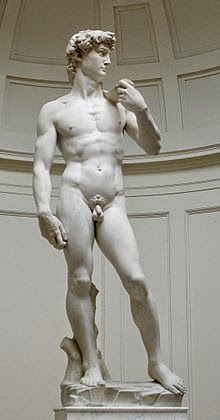“The Heavenly and Earthly Trinities” by Bartolomé Esteban Murillo.
"Murillo, The Heavenly and Earthly Trinities, about 1675-1682 Photo © The National Gallery, London”.
Today id the feast of the Holy Family. The painting above is called the Heavenly and Earthly Trinities; and it has been painted in the sign of the Cross.
Looking vertically from the top downwards we see God, the Holy Spirit in the form of a dove and Jesus looking up to His Father in Heaven. That is the Heavenly Trinity.
Looking horizontaly from left to right we see the Virgin Mary, Jesus and His earthly father Joseph. The Earthly Trinity.
Four things of importance to note in this painting by Murillo. God in Heaven is looking down and blessing the Holy Family. Jesus responds to His Father by looking up to Heaven. Mary is looking at Jesus and perhaps thinking about the Son of God saving the world; whilst Joseph is looking at us, significant this, inviting us to join in the Holy Family.That is because we are part of the Holy Family through our own Faith and trust in the Lord.
Not much is known about Jesus’ childhood. The Bible records the story of His birth in Bethlehem, His presentation at the Temple in Jerusalem a few days later, and then the Holy Family went to live in Nazareth. Their home town. We don't know much more about Jesus' early days of His life; apart from when His parents found Him teaching in the Temple at the age of twelve or so.
We are left to wonder what He was like as a baby. Crawling on the ground and then taking His first hesitant steps. I wonder what His first words were when He spoke.
One thing for sure though. He was much loved by His earthly parents, who devoted themselves to His up-bringing, until He was ready to start His work on earth as His Father willed.
Like most parents, they must have wished many good things for Him as He grew up, even though they knew who He really was and what His mission in this world was to be.
Mary, however, carried an additional burden in her heart. She knew from those early days what was to happen. Simeon in the temple had told her: “… sorrow, like a sharp sword, will break your own heart”. Luke 2:35. Joseph was there to witness it all.
Can you imagine what they went through as parents? Knowing of the torture and Crucifixion which Christ would suffer.
And Mary, endured that pain even more as she followed her Son on the way to Calvary.
Yet … despite all that. Despite knowing well ahead what was to happen, despite witnessing the Crucifixion for herself, one thing must have sustained Mary and encouraged her throughout her ordeal: the sure knowledge that Jesus was/is the Son of God and that He will rise again from the dead.
That thought alone should help us when we too go through difficult times. No matter how difficult our situation we should hold on to the fact that our Lord, the one we profess to love and follow, is the Son of God. By His death and Resurrection He has conquered evil once and for all.
And no matter what our situation may be, we can assuredly turn to Mary, and seek her help in bearing the difficulties we go through.






























